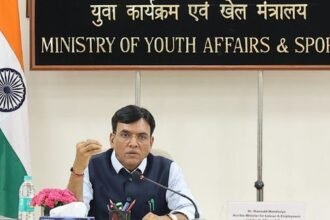When applying for jobs, academic opportunities, or even personal matters like marriage proposals in India, people often come across three terms Bio Data, Resume, and Curriculum Vitae (CV). While many use these words interchangeably, each one has its own purpose, format, and place of use. Understanding the difference can save you from confusion and help you present yourself in the right way.
1. What is Bio Data?
Bio Data (Biographical Data) is the most basic form of personal information. It mainly focuses on:
- Name, age, date of birth
- Gender, marital status, religion, nationality
- Contact details
- Educational qualifications
- Work experience (brief, if required)
Where is Bio Data used?
- Commonly used in marriage proposals in India.
- In government forms or background verification processes.
- Some small organizations may still ask for Bio Data instead of a resume.
Tip: Keep Bio Data short and factual, usually 1 page.
2. What is a Resume?
A Resume is a professional document that highlights your skills, work experience, and achievements. It is usually 1 to 2 pages long and is customized depending on the job you’re applying for.
What to include in a Resume?
- Career objective or summary
- Educational background
- Work experience (with responsibilities and achievements)
- Skills (technical, communication, leadership, etc.)
- Certifications, internships, or projects (if relevant)
Where is a Resume used?
- Private sector job applications in India and abroad.
- Campus placements and internships.
- Situations where employers want a quick overview of your skills.
Tip: Always tailor your resume for the job role you are applying to. Recruiters usually scan resumes for less than a minute.
3. What is Curriculum Vitae (CV)?
Curriculum Vitae (CV) is a detailed document that provides a complete record of your academic and professional history. Unlike a resume, a CV can run into 2–10 pages, depending on experience.
What to include in a CV?
- Personal details (name, contact info)
- Detailed educational history
- Research work, publications, papers presented
- Academic achievements and awards
- Professional experience
- References
Where is a CV used?
- Academia: research positions, teaching roles, PhD programs.
- Overseas job applications, especially in Europe, the Middle East, and Africa, where CVs are more common than resumes.
- Applying for fellowships, grants, or scholarly opportunities.
Tip: A CV is not meant to be tailored heavily; it is a comprehensive record of your career.
| Feature | Bio Data | Resume | Curriculum Vitae (CV) |
|---|---|---|---|
| Length | 1 page | 1 to 2 pages | 2 to 10+ pages |
| Focus | Personal details | Skills, work experience, achievements | Complete academic and professional history |
| Common Usage | Marriage, govt. records | Private jobs, internships, placements | Academia, overseas jobs, research programs |
| Flexibility | Very fixed | Highly customizable | Less customizable, more detailed |
Conclusion
- Use Bio Data when personal details matter most, such as marriage or basic forms.
- Use a Resume for job hunting in the private sector where brevity and relevance are important.
- Use a CV for academic, research, or overseas opportunities where a detailed career record is expected.
Choosing the right format is not just about following tradition, but also about making the right impression in front of the right people.















